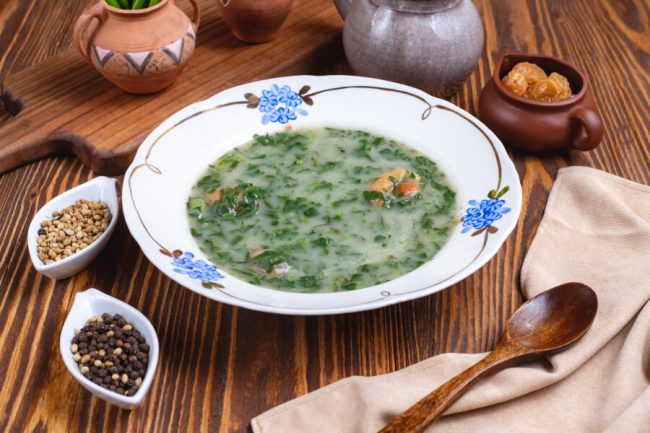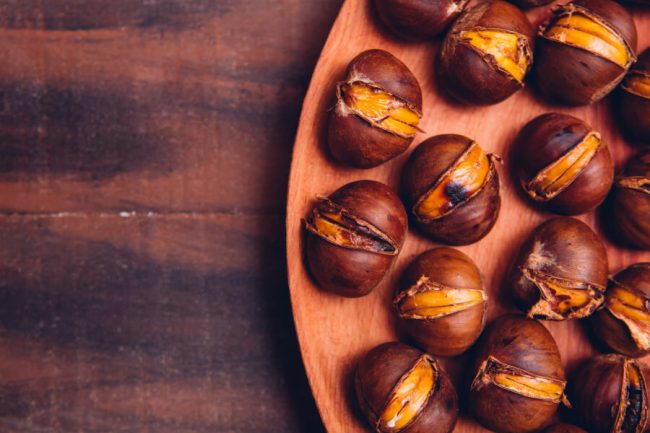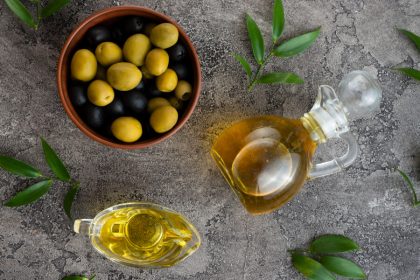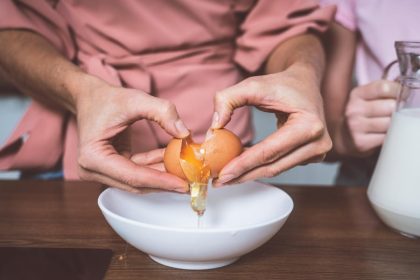Autumn in Spain brings with it a wonderful mix of rich colors, cooler temperatures, and hearty dishes to satisfy any craving.
In line with the season, autumn foods are a celebration of flavors and nutrition, filled with locally grown fruits, vegetables, and traditional recipes passed down through generations.
Embracing seasonal eating in Spanish autumn means not only enjoying fresher, more flavorful ingredients but also improving your health, supporting local agriculture, and inspiring new culinary experiences.
Signature Autumn Foods from Spain
Persimmons (Caqui)
Persimmons are a highlight of seasonal eating in Spain during autumn. Their vibrant orange color signals high levels of vitamin A and vitamin C, essential for immune health and skin vitality.
Eaten fresh or added to salads, persimmons add natural sweetness and a dose of antioxidants to support the body during colder months. For those practicing seasonal eating, persimmons bring both flavor and health benefits to the table.
Pomegranates (Granada)
Autumn is also pomegranate season, a time when these jewel-like fruits are bursting with antioxidants. Seasonal eating advocates praise pomegranates for their polyphenols, compounds that aid in heart health and reduce inflammation.
In Spain, pomegranates are often added to salads or enjoyed as a refreshing snack. As a key part of seasonal food, pomegranates exemplify how autumn produce can be delicious and packed with health benefits.
Grapes
The grape harvest, or vendimia, is one of Spain’s most celebrated agricultural events in autumn, making grapes a staple in seasonal eating. Grapes are not only a snack but also used in wine production, an essential part of Spanish culture.
They provide resveratrol, known for its heart-protective properties, adding another layer of wellness to seasonal eating. Enjoyed fresh or in jams, grapes highlight how seasonal food lets us enjoy foods at their prime.
Pumpkin (Calabaza)
Pumpkin is a beloved ingredient in Spanish autumn dishes, contributing fiber, beta-carotene, and a rich, comforting flavor.
Embracing seasonal eating with pumpkin means enjoying it in hearty soups and stews like Caldo Gallego, where its smooth texture improves every spoonful.
Pumpkin’s nutritional benefits make it a top choice for those following seasonal food, ensuring a warming, nutritious addition to any meal.
Chestnuts (Castañas)
Roasted chestnuts are a true symbol of Spanish autumn, enjoyed by street vendors and home cooks alike. Seasonal eating with chestnuts provides an excellent source of fiber and essential minerals like potassium.
In Spain, chestnuts are often enjoyed roasted or added to stews for a unique depth of flavor. As part of seasonal food, chestnuts offer both nutritional value and a touch of nostalgia, evoking the rich traditions of Spain’s autumn cuisine.
Swiss Chard (Acelga)
Swiss chard, or acelga, thrives in the cool autumn climate of Spain and is an essential leafy green in seasonal eating. Rich in fiber, vitamins A and K, and minerals, chard supports bone health and digestion.
In Spanish households, chard is frequently used in stews and sautéed dishes, a simple yet effective way to embrace seasonal food and add nutrients to the diet without sacrificing flavor.
Mushrooms (Setas)
Mushrooms, or setas, are popular in Spain’s forests during autumn, and seasonal eating enthusiasts take full advantage of their availability.
Packed with protein and B vitamins, mushrooms provide a meat-free option that is both nutritious and flavorful.
Spain’s love for mushrooms is showcased in autumn tapas like mushroom croquettes or sautéed mushrooms with garlic.
For those practicing seasonal eating, mushrooms are a versatile, healthy option that improves any dish.
Signature Autumn Dishes from Spain: Hearty Stews and Regional Specialties
In Spain, seasonal eating is at the heart of regional culinary traditions, especially in autumn. Dishes like Fabada Asturiana from Asturias and Espinacas con Garbanzos from Andalusia celebrate the bounty of local produce, creating meals that are both satisfying and packed with seasonal flavors.
These dishes show how seasonal food connects people to their region and its unique autumn ingredients.
Fabada Asturiana
Asturias is known for Fabada Asturiana, a white bean stew that showcases seasonal eating with hearty beans, cured meats, and a touch of paprika.
This stew, perfect for the colder months, is a staple of autumn in Asturias, providing warmth, protein, and comfort in every bite.
Caldo Gallego
In Galicia, Caldo Gallego exemplifies seasonal food by combining potatoes, greens, and sometimes chorizo.
This soup is a delicious way to enjoy the produce of autumn while warming up as the days grow cooler. Seasonal eating with Caldo Gallego is about savoring the simplicity and richness of local ingredients.
Tapas with a Twist: Autumn-Inspired Small Plates
Autumn tapas are a great way to explore seasonal eating on a smaller scale. Popular tapas during this time include roasted peppers with anchovies and mushroom croquettes, showcasing the depth and diversity of Spain’s autumn produce.
These small plates make seasonal eating approachable and fun, letting you try different flavors in a casual setting.
Culinary Traditions and Festivals Celebrating Seasonal Eating
Seasonal eating is celebrated in Spain’s autumn festivals, where communities gather to enjoy local foods and harvests.
Events like La Fiesta de la Vendimia in Rioja and Chestnut Festivals in Galicia highlight the importance of autumn ingredients and reinforce the value of seasonal food.
La Fiesta de la Vendimia
Held in wine regions like Rioja, La Fiesta de la Vendimia is a grape harvest celebration that draws thousands.
This festival is a true celebration of seasonal eating, focusing on locally harvested grapes and wines, symbolizing Spain’s dedication to eating in harmony with the seasons.
Chestnut Festivals (Magosto)
Celebrated in Galicia, the chestnut festival, or Magosto, involves roasting chestnuts over open fires.
This festival epitomizes seasonal eating with its focus on enjoying foods that are naturally available and cherished in autumn.
Embrace Seasonal Eating with These Simple Recipes
If you’d like to explore seasonal eating at home, try these simple recipes using autumn superfoods.
Pumpkin and Chickpea Stew
A simple yet nutritious way to enjoy seasonal eating is with a pumpkin and chickpea stew. Sauté garlic, onions, and pumpkin, then add chickpeas and seasoning. Let the flavors meld for a delicious, hearty dish that embodies seasonal food.
Persimmon and Pomegranate Salad
Combine sliced persimmons and pomegranate seeds with arugula for a fresh salad that embraces seasonal eating in every bite. Drizzled with olive oil, this salad is a light yet satisfying way to enjoy autumn’s best produce.
Conclusion
Adding seasonal eating to your diet allows you to experience the best of Spain’s autumn harvest, from nutrient-packed persimmons to hearty chestnuts.
By embracing seasonal eating, you’re not only savoring foods at their peak but also supporting your health, local farmers, and traditional culinary practices.
Make this autumn season an opportunity to explore seasonal eating with Spain’s most flavorful superfoods.
FAQs
What type of food do we eat in the autumn season?
Autumn foods often include heartier ingredients like pumpkins, chestnuts, mushrooms, and root vegetables, ideal for warming stews and soups.
What food is in season in Spain?
In autumn, Spain’s seasonal produce includes persimmons, pomegranates, chestnuts, pumpkins, and Swiss chard.
What are the types of autumn food?
Typical autumn foods include a mix of fruits, vegetables, and comfort foods such as stews, soups, and roasts.
What fruit is seasonal in Spain in October?
In October, persimmons, pomegranates, and grapes are among the fruits in season, ideal for adding a sweet, fresh flavor to dishes.







